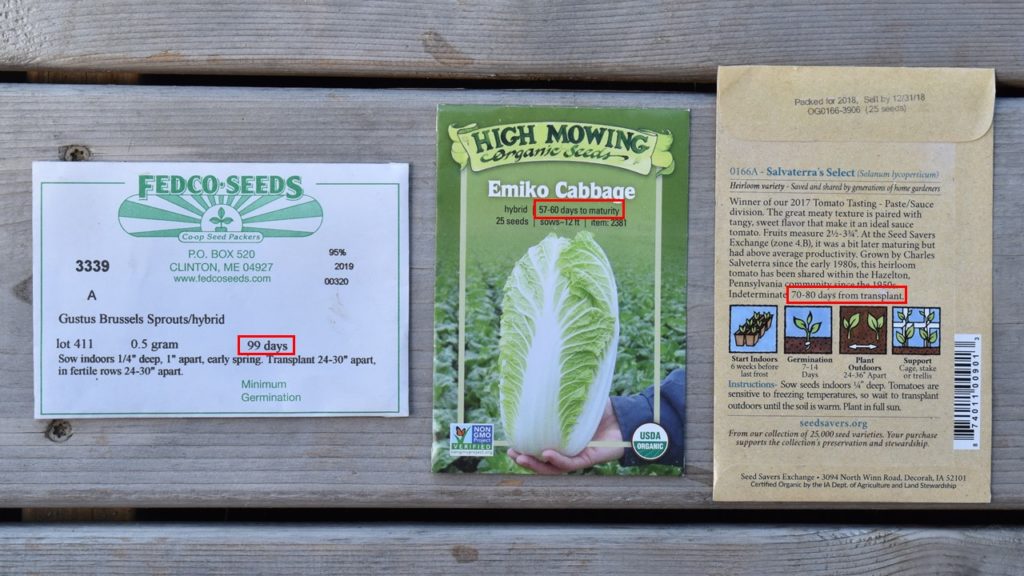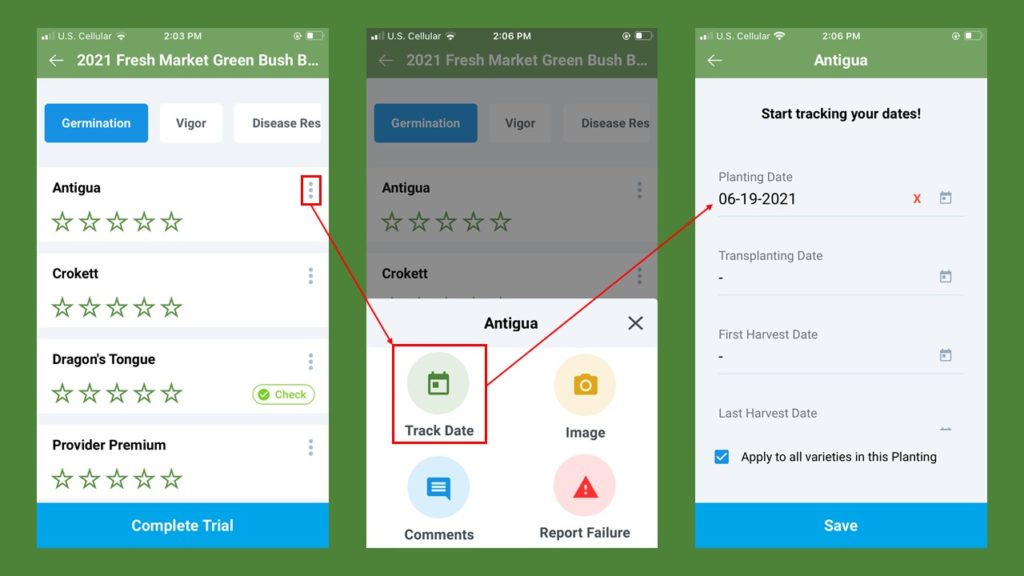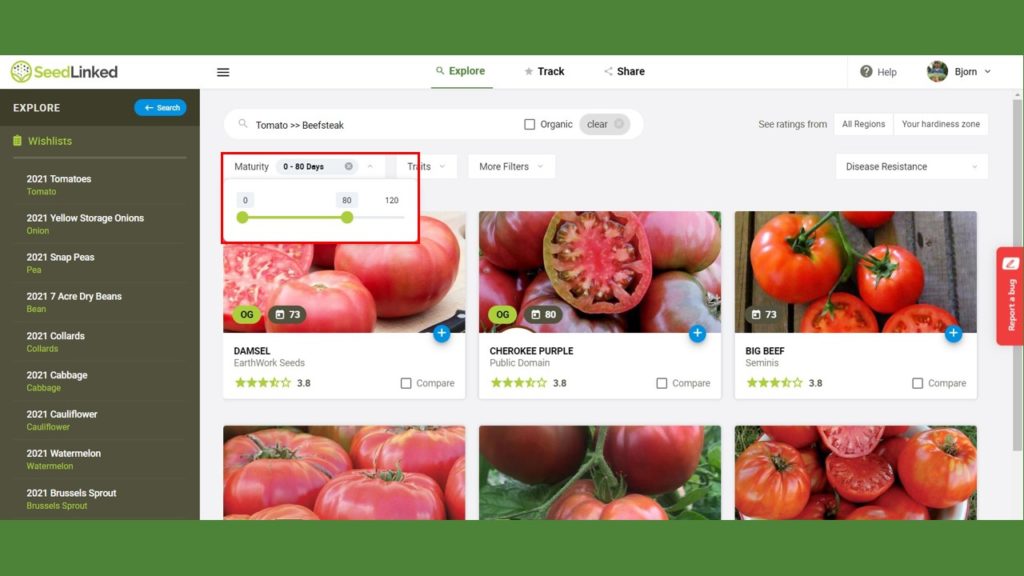For every collaborative trial and planting you review on SeedLinked, we ask you to add four distinct types of dates: planting date, transplant date (if applicable), first harvest date, and last harvest date. You may find yourself saying, “That is a lot of dates! Why are there so many? And why are adding them to trials and plantings useful?”
What are days to maturity?
Before we dive into the why, let us start with one important definition related to dates that is oh so important to growers – days to maturity or days to harvest – which are used interchangeably. If you pick up any seed catalog or seed packet, you are going to see one of these in the growing description/notes for a variety.
Days to Maturity (DTM) is the amount of time from planting a seed or transplant in the soil until the time its foliage or fruit is ready to harvest for eating.
For direct-seeded crops (E.g., beans, corn, lettuce, carrots, beets) it is from the time they are direct seeded into the soil until the first harvest. For crops that are typically transplanted (E.g., onions, kale, cabbage, broccoli, peppers, tomatoes, etc.), DTM is from the moment they are transplanted until the first harvest. That being said, some seed companies will specify on a seed packet if DTM is listed “from transplant” or “from seeding,” and may have text that says “subtract ‘X’ weeks from DTM if transplanting.”

Days to maturity are extremely helpful for growers. It helps serve as a guide for if a variety will mature in your growing zone. For example, if John has a garden in northern Minnesota (Zone 3b) and has a short growing season, DTM can tell him which tomato varieties are early maturing enough to grow and which ones will not reach maturity before his first frost.
Additionally, DTM can help growers with succession planting and spacing out the harvest. For example, Ellen wants to space out cabbage harvest for her farm but wants to plant all the cabbages at the same time. She picks three varieties to plant that have DTMs of 60, 80, and 100 days to space out the harvest.
Other Days to Maturity Considerations
There are two other important considerations related to days to maturity that are good to take into account – your latitude and when you plant. Let’s dive into the first one – your latitude. If you are further north in North America, you experience less daylight in the spring and fall and more daylight in the summer. Alternatively, if you grow in the southern part of North America, you experience more consistent amounts of daylight over the season and have especially less daylight in the summer compared to more northerly latitudes. The differing amount of daylight at various latitudes has an impact on DTM for crops that are more sensitive to light (the scientific term for this is photoperiod sensitive).
Now, let’s discuss the second factor – when you plant. If you plant early for a spring crop or later in the season for a fall/winter crop, oftentimes you must add days to the DTM because accumulated warmth (the scientific term is growing degree days or GDD) happens at a slower rate at those times of the year.
At SeedLinked, we aim to increase transparency around days to maturity and hone them in for growers in different growing zones and regions for each variety. This is why we ask folks submitting collaborative trial reviews to include up to four different dates.

Why should I add dates to my trial or planting?
Any date you add to a collaborative trial or planting helps build data for varieties on the SeedLinked Seed Marketplace and helps other growers (and seed companies) find the variety with the most accurate and correct days to maturity for their growing conditions.
Here are some more examples of how recording dates for your collaborative trials and plantings can help inform growers in the future when they use the Seed Marketplace:
*Planting/transplanting dates help other growers determine the optimum planting date by region for a given variety.
* First and last harvest dates inform growers on which variety is best for each season (E.g., optimum summer lettuce, spring carrots, or summer broccoli).
* First and last harvest dates help determine harvest length for a given variety. Some varieties have a short harvest window (E.g., melons) while others have a much longer harvest window (E.g., kale).
* Filter a search in our Seed Marketplace by days to maturity (see below). This can help you find a variety that is better adapted to your location.

How to Add Dates to a Collaborative Trial or Planting
Okay, now that you are sold on why to enter dates for your trials and plantings, we bet you are wondering how to add them. Lucky for you, we read your mind!
Check out this quick tutorial that covers how to add dates to any trial or planting on the SeedLinked web platform and app.
Tutorial: How to Add Dates to a Trial or Planting (Web/App)
Thanks, in advance for reviewing (and adding dates) collaborative trials and plantings on SeedLinked. We appreciate and value your participation.
If you have any questions about adding dates to trials or plantings, please reach out to us at help@seedlinked.com
Happy growing!
Published 7/7/21
